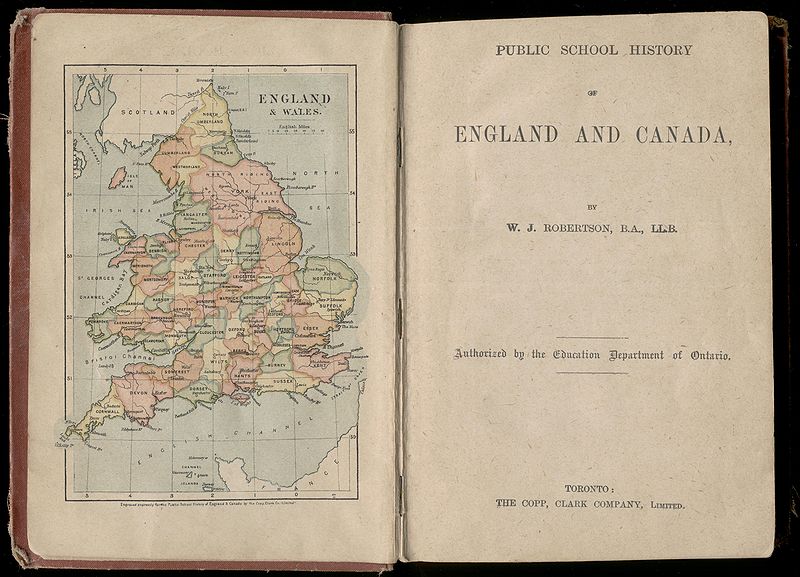Narratives and Historical Thinking
18 November 2014 - 1:42pm
 I recently had the privilege of attending the Ontario History and Social Studies Teachers Association (OHASSTA) conference. There were many thought-provoking sessions dealing with a range of topics, including assessing conversations, disciplinary thinking in the social sciences, and assessing historical thinking.
I recently had the privilege of attending the Ontario History and Social Studies Teachers Association (OHASSTA) conference. There were many thought-provoking sessions dealing with a range of topics, including assessing conversations, disciplinary thinking in the social sciences, and assessing historical thinking.
One recurring theme was the place of historical narratives within historical thinking. As many of you may know, Ontario has recently adopted a new curriculum, which emphasizes the development of historical thinking. The Ontario model (which is adapted from the work of Peter Seixas) focuses on the use of five concepts: primary source evidence, historical significance, continuity and change, cause and consequence, and historical perspective taking. While the connection of past to present, and the narrative nature of history, can be discussed using some of these thinking concepts (e.g., historical significance invites discussion of historical narratives) many teachers seem to be unsure how to teach students about the narrative nature of history (I myself wonder if the concept of “narratives” should not be a separate historical thinking concept).
While very few people advocate for teaching a traditional political grand narrative, there were a large number (probably the majority of people I spoke with) who would simply replace the old grand narrative with single narratives of their own choosing. I am not a defender of the old political narrative. But, I wonder about the wisdom of replacing one narrative with another -- even if the new narrative is more inclusive and progressive (for an interesting discussion of this issue see Dummitt, 2009)
Interestingly, when I suggested to some of my colleagues that our students' ability to understand history might be increased if teachers purposefully presented students with differing historical narratives, I was met with two very different forms of opposition. First, were those who claimed: “that is too hard for my students.” Second, were the teachers who seemed sympathetic to my idea, but who felt that a lack of age appropriate resources (or time to make the resources themselves) made a multi-narrative approach impractical.
I myself do not find either of these objections to be convincing. In particular I disagree with the idea that dealing with conflicting historical narratives is beyond the abilitiy of secondary students. My own personal experience indicates that students can grapple with multiple narratives when given appropriate support. Examples of how to introduce students to multiple narratives can also be found in the work of Bain (2005) and Den Heyer and Abbott (2011). I wonder, however, what experience others have had? What problems have you encountered when working with multiple narratives? What barriers did your students encounter? Can they be overcome?
Works Cited:
Bain, R.B. (2005). 'They thought the world was flat?': applying the principles of how people learn in teaching high school history. In How Students Learn (eds.) John Bransford and Suzanne Donovan (pp. 179-214). Washington: The National Academies Press.
Den Heyer, K., & Abbott, L. (2011). "Reverberating echoes: challenging teacher candidates to tell and learn from entwined narrations of Canadian history". Curriculum Inquiry (41: 5), 610-635
Dummitt, C (2009). After inclusiveness: the future of Canadian history. In Contesting Clio's Craft: New Directions and Debates in Canadian History (eds.) Christopher Dummitt & Michael Dawson (pp. 98-122). London: Institute for the Study of the Americas.
photo credit: Public School History of England and Canada 1892. WikiCommons.
Narratives and historical thinking
Thanks for the great post Scott. Your discussion of the place of narrative in the Ontario curriculum has highlighted one of the major conceptual problems with the Big Six historical thinking concepts as outlined by Dr. Peter Seixas for the Historical Thinking Project. How do we teach students about narratives when adopting a historical thinking approach? This is one of the conceptual issues that I plan on investigating in the future.
As you suggested, replacing one master narrative with another is not the answer, no matter how inclusive or progressive the narrative is. Presenting contrasting narratives is an excellent way of showing students the constructed nature of history and the debates and controversies that exist amongst historicians. It is also an excellent way to invite students to analyze evidence and accounts in order to come to a defensible position on which narrative is more plausible. While finding resources that reveal differing interpretations of history, there are many great examples out there. For example, UBC PhD Candidate Fiona McKellar's fantastic new website "Canada's First World War Experience" includes documents that summarize the major theories regarding the causes of World War I. http://vimyridgehistory.com/kit-1/war-breaks/documents/wwi-theses-confli.... Summarizing different historical theories and arguments about historical topics is an easy way for teachers to introduce students to competing narratives. British history textbooks, especially the publisher Hodder, focus on in-depth studies of historical periods or themes that often include a focus on different historiographical interpretations of events.
Those who argue that students cannot deal with multiple narratives fail to consider that students regularly encounter conflicting accounts of events, and have to make decisions about which accounts are more believable.
Thanks again for the thought-provoking piece that will hopefully stimulate some important discussion.

